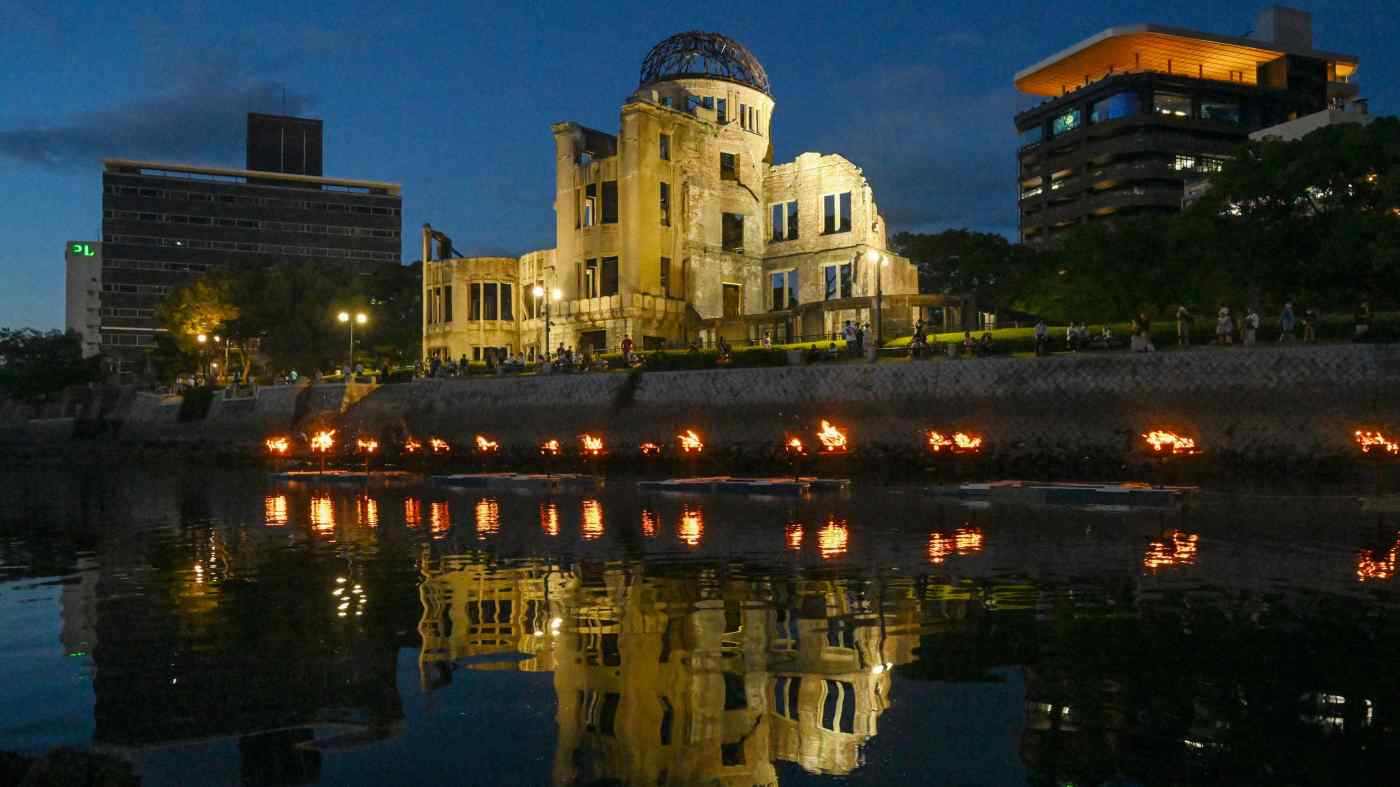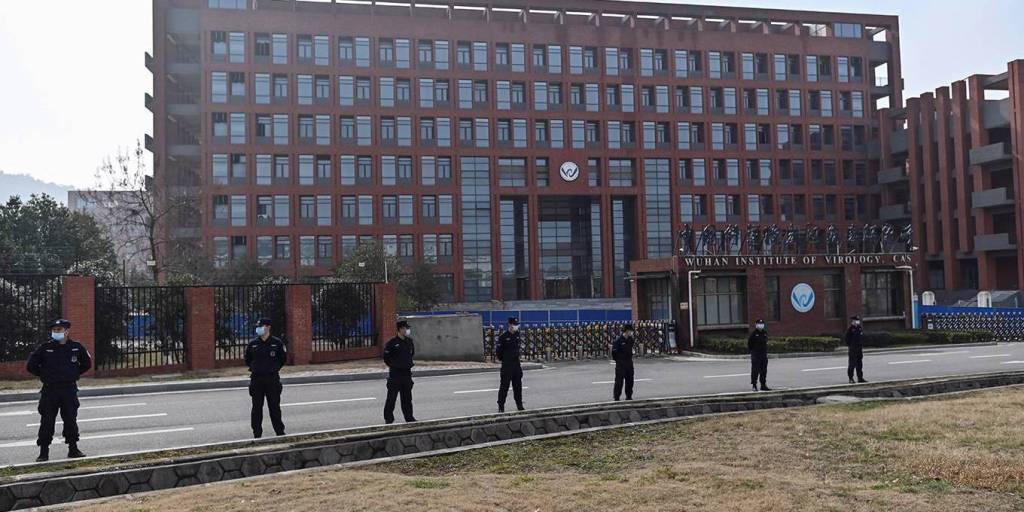
Atomic bombings were more about demonstrating power than securing surrender
Months before the twin atomic attacks, it had become clear that the issue was not whether Japan would surrender but when. America’s own Strategic Bombing Survey concluded in 1946 that “Japan would have surrendered even if the atomic bombs had not been dropped.”
The Hollywood blockbuster “Oppenheimer” carries the somber message that the nuclear age may have doomed us all.
The biopic about American physicist J. Robert Oppenheimer, the “father of the atomic bomb,” has renewed international attention around the morality and military necessity of the nuclear attacks on the Japanese cities of Hiroshima and Nagasaki 78 years ago.
Why the first and only use of atomic weapons occurred is still something of a vexed question, especially because Japan was already essentially defeated before Hiroshima was destroyed. Japan was then under a crippling sea and air blockade and conventional U.S. firebombing air raids were devastating its major cities.
Years later, plagued by guilt, the real Oppenheimer acknowledged that the bomb on Hiroshima was used “against an essentially defeated enemy.”
The U.S. may have won the war before the Hiroshima bombing but it was not content with defeating Japan. It sought Japan’s unconditional surrender.
Decades later, there is still no definitive answer as to why the U.S. attacked Nagasaki with a nuclear weapon just three days after Hiroshima’s destruction and before Japan had time to fully grasp the strategic implications of the first atomic attack.
Even if the Hiroshima bombing was justifiable as a way to force Japan to surrender, what military purpose did the precipitous second attack serve?
Telford Taylor, who served as chief prosecutor at the Nazi war crime trials in Nuremberg, Germany, said, “The rights and wrongs of Hiroshima are debatable, but I have never heard a plausible justification of Nagasaki.”
The unstated justification, I would argue, had little to do with Nagasaki itself. Rather, the administration of U.S. President Harry S. Truman judged the bombing as necessary to fully demonstrate America’s new destructive powers.
Truman, who took office in April 1945 days before Nazi dictator Adolf Hitler committed suicide, gave Japan no firm deadline to surrender before rushing into the second atomic strike. No warning was given to the residents of either city bombed.
To be sure, all sides, including imperial Japan, engaged in mass killings during World War II, a conflict in which nearly 60 million people died. The then-prevailing political-military culture that regarded the targeting of civilian centers as a legitimate tool of warfare certainly facilitated the atomic bombings.
Did the bombings alone lead to Japan’s announcement of surrender six days after the Nagasaki attack? Disagreement among historians still persists over this issue.
The entry of the Soviet Union into the war against Japan, one day before the Nagasaki bombing, gutted a bilateral nonaggression pact and was an equally, if not more, critical factor in Tokyo’s surrender. By opening a new front in the conflict, the Soviet move was a mortal blow to Japanese morale, making capitulation more certain.
The official U.S. narrative in the war’s immediate aftermath asserted that the atomic bombings by themselves accomplished the goal of compelling Japan to surrender, saving the lives of thousands of Americans who would have been killed if a full-scale invasion of Japan’s main islands had become necessary.
This “noble action” narrative later came under attack from American scholars who argued that Japan had been ready to surrender before the atomic bombings.
 A moment of silence is observed at 11:02 am on Aug. 9 at the Peace Statue in Nagasaki, marking the moment an atomic bomb was dropped on the city in 1945. © Kyodo
A moment of silence is observed at 11:02 am on Aug. 9 at the Peace Statue in Nagasaki, marking the moment an atomic bomb was dropped on the city in 1945. © Kyodo
The revisionist thesis drew strength from the White House-initiated U.S. Strategic Bombing Survey, which in 1945-46 examined the U.S. bombing campaigns against Germany and Japan. The report concluded that “Japan would have surrendered even if the atomic bombs had not been dropped.”
In fact, months before the twin atomic attacks, it had become clear that the issue was not whether Japan would surrender but when. A key sticking point was the emperor’s role: The Japanese wanted the emperor to retain authority rather than be reduced to a figurehead as ultimately happened under U.S. military occupation.
In deciding how to bring the war to a close, the Truman administration overruled America’s military leadership. Indeed, a string of U.S. military leaders later publicly criticized the atomic bombings as unnecessary.
“The Japanese had, in fact, already sued for peace,” said Admiral Chester Nimitz, who served as commander in chief of the U.S. Pacific Fleet. “The atomic bomb played no decisive part from a purely military point of view in the defeat of Japan.”
Admiral William Halsey Jr., the U.S. Third Fleet commander, said: “It was a mistake. … [The scientists] had this toy and they wanted to try it out, so they dropped it.”
Hiroshima was selected as the first nuclear target because of its flat terrain and because it had essentially been untouched by U.S. aid raids, thus allowing the impact of the first atomic weapon, an untested uranium bomb, to be clearly assessed.
For the second attack, the U.S. chose to employ a more powerful plutonium bomb that had been secretly tested 24 days earlier in the New Mexico desert. The city of Kokura, now part of Kitakyushu, was chosen as the primary target, but because of heavy cloud cover there on the appointed day, the U.S. B-29 bomber carrying the weapon was diverted to Nagasaki.
The techno-political imperative to show off America’s unmatched destructive prowess to the world then set in motion a new U.S.-led global order. Indeed, while the bombings may have contributed to ending a hot war, they were the opening shots of a long Cold War.
The resulting proliferation of nuclear weapons created an edgy world that today bristles with more than 13,000 atomic weapons. The Ukraine conflict, meanwhile, has increased the risks of a cataclysmic nuclear war, with both Russia and NATO conducting preparatory drills.
The legacy of Hiroshima and Nagasaki has been to put humanity’s future in jeopardy. The world today has a nuclear test ban treaty but no treaty outlawing the use of nuclear weapons.
This ominously means that parties to the Comprehensive Test Ban Treaty, while prohibited from testing on their territories, face no legal constraint to following the U.S. example in Hiroshima of employing an untested nuclear weapon against an adversary. For the time being, fortunately, political constraints still apply, even if tenuously.
Brahma Chellaney is professor emeritus of strategic studies at the Center for Policy Research in New Delhi and a former adviser to India’s National Security Council. He is the author of nine books, including “Water: Asia’s New Battleground.”





 Satellite imagery of suspected missile silos being constructed near Jilantai, pictured in November 2019. © Maxar Technologies/Getty Images
Satellite imagery of suspected missile silos being constructed near Jilantai, pictured in November 2019. © Maxar Technologies/Getty Images




 Yet, in the lead-up to the Singapore summit, Trump and Bolton have gratuitously referred to the “Libya model” in the specific context of North Korea. Mentioning the U.S. elimination of Qaddafi, Trump
Yet, in the lead-up to the Singapore summit, Trump and Bolton have gratuitously referred to the “Libya model” in the specific context of North Korea. Mentioning the U.S. elimination of Qaddafi, Trump 
You must be logged in to post a comment.